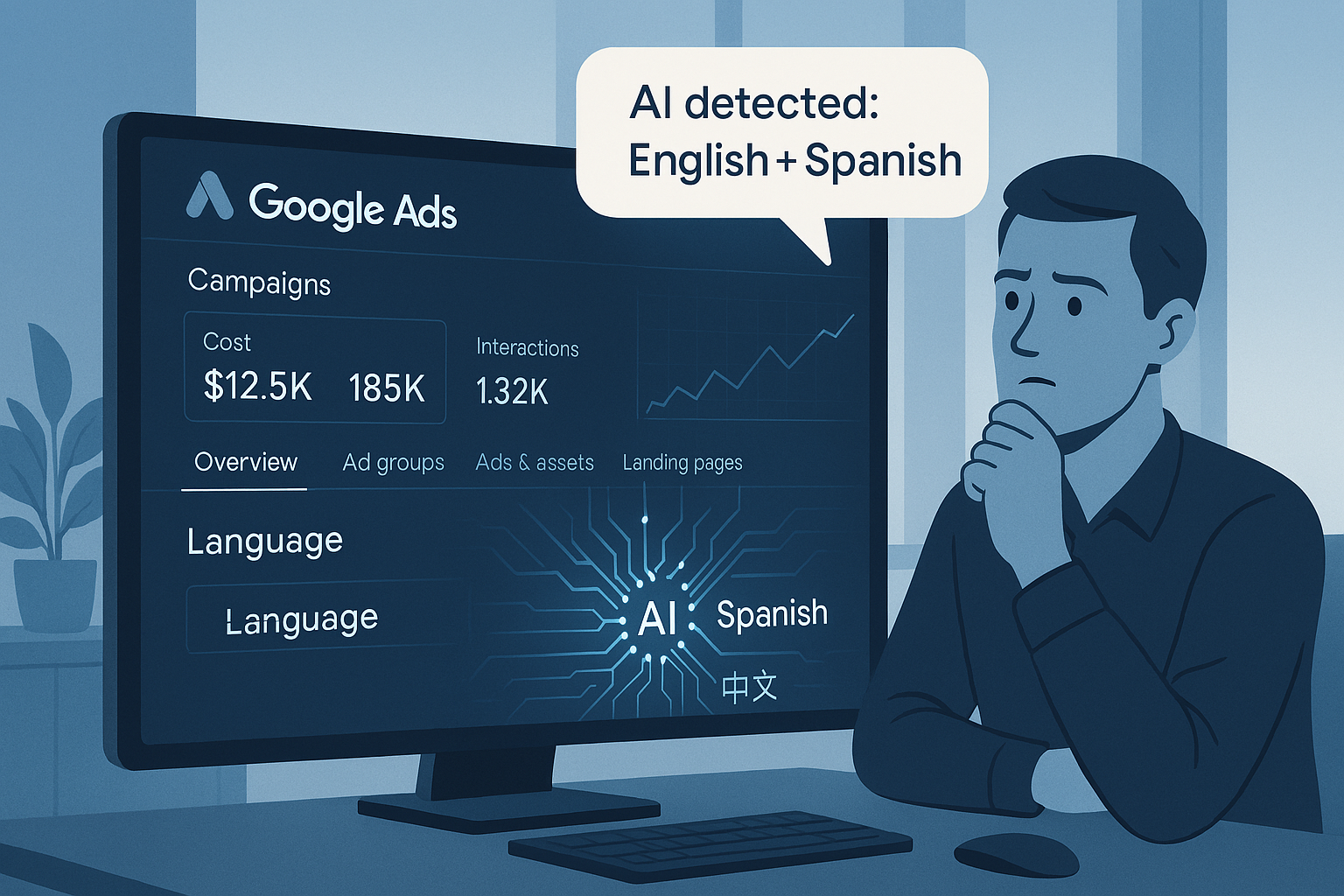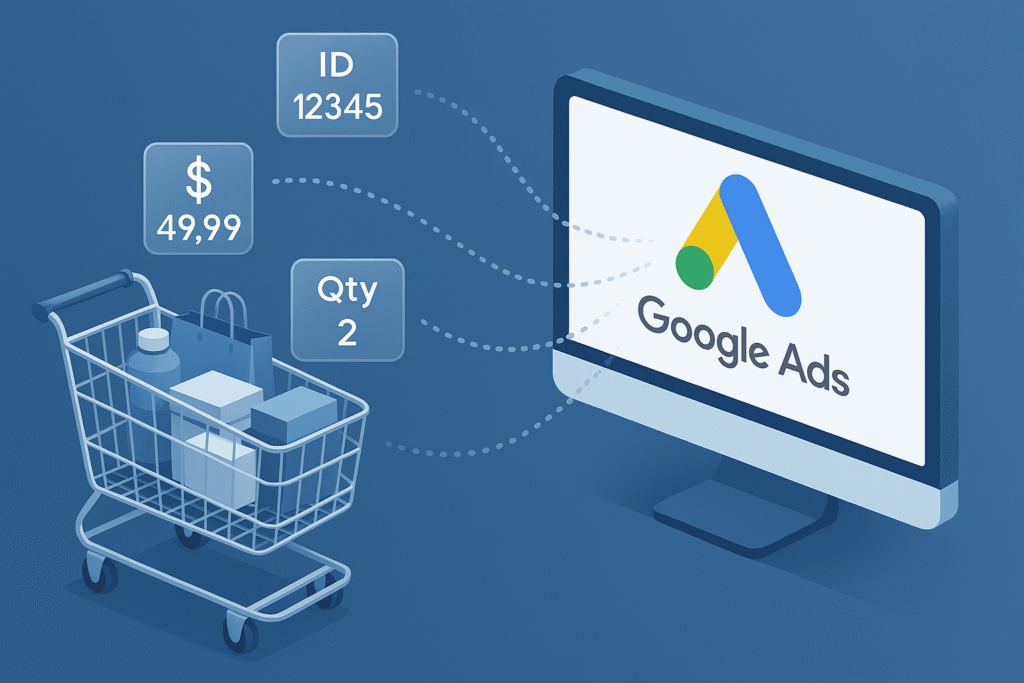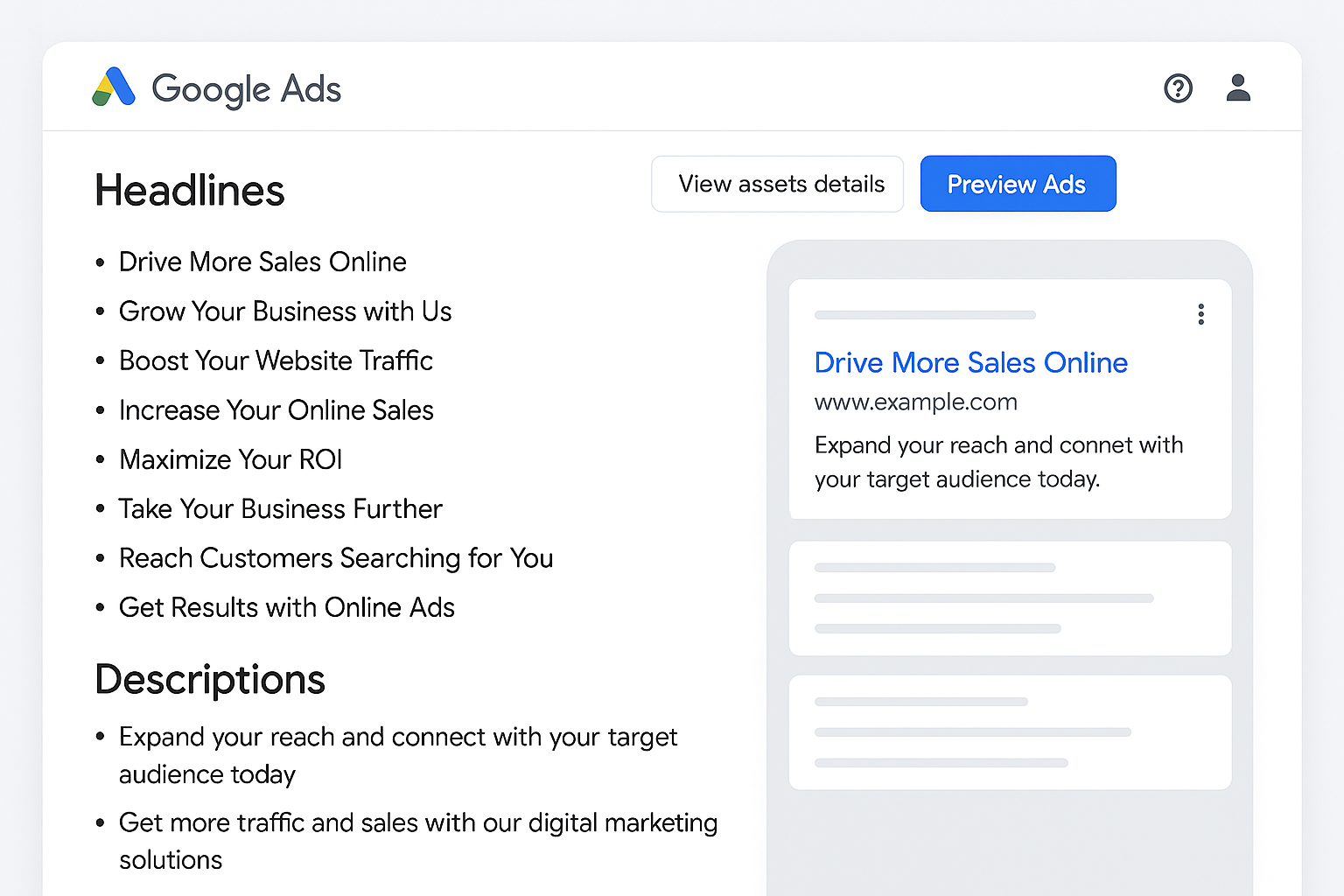Google is once again shaking things up in the world of digital advertising. By the end of 2025, the company will completely remove manual language targeting from Search campaigns. Instead of advertisers choosing which languages to target, Google Replaces Language Targeting With AI will take control and automatically detect the user’s language using different signals. Dive into the latest innovations with Google’s new AI tools slash fake ad activity and discover how the platform is fighting fraud.
The change was first spotted by advertising expert Ezra Sackett, and it quickly created a buzz across the marketing community. For years, advertisers have relied on language targeting as a way to refine their campaigns. Now, Google believes artificial intelligence can do the job better, faster, and more accurately.
What Is Changing?
Currently, when you set up a Search campaign in Google Ads, you can pick the language you want your ads to target. For example, a business could target English speakers in the UK or Spanish speakers in the United States. This level of control allowed advertisers to tailor messages and budgets to specific groups.

But by December 2025, that option will disappear. Instead, Google’s AI will automatically determine the language a user understands, based on signals like search queries, browsing patterns, device settings, and past activity.
For non-Search campaigns such as Display, YouTube, or Discovery, manual language targeting will remain available. Only Search campaigns are affected by this update.
Why Is Google Making “Google Replaces Language Targeting With AI” Move?
Google says the shift to AI detection will make ads more relevant and effective. According to the company, users often search in more than one language or switch between languages. For example, someone might type a query in English but prefer content in French. Google’s AI can read these subtle patterns and serve ads in the most suitable language.
The company argues that advertisers don’t need to worry about missing out on audiences anymore. AI will handle the complexity automatically, ensuring ads are shown to the right people at the right time.
In simple terms, Google wants to remove manual work for advertisers and replace it with what they see as a smarter, more dynamic system. Stay ahead in digital marketing, check out the recent Google Search Ads update to adapt your strategies to the newest features.
How Advertisers Are Reacting
Not everyone is celebrating the change. Many advertisers are concerned about losing control. Manual targeting has been a reliable tool, especially for global businesses that run multilingual campaigns.
Some marketers worry that AI may not always get it right. If the system misinterprets signals, ads could end up being shown in the wrong language, reducing effectiveness and wasting ad spend.
Others feel this is another example of Google limiting advertiser control in favor of automation. While AI can save time, it also means businesses must trust Google’s system without the ability to fine-tune language settings themselves.
One advertiser commented online, “It feels like we’re giving Google more power and losing flexibility. I don’t want my English ads showing up to someone who prefers Spanish.”
A Step in Google’s Bigger AI Strategy
This move fits into Google’s larger plan to make Ads more automated. Over the past few years, the company has introduced Performance Max campaigns, auto-bidding strategies, and AI-generated creative tools. The removal of language targeting is just the latest step.
Google believes AI can process signals in real time faster than humans ever could. While advertisers may feel uneasy about the lack of manual settings, Google insists that its AI delivers stronger results by adapting instantly to user behavior.
It’s clear that the future of Google Ads is increasingly AI-driven. For advertisers, the choice is becoming less about tweaking settings and more about trusting automation.
What This Means for Small Businesses
For small businesses, this update could be a double-edged sword. On the one hand, AI-powered language detection could help them reach new audiences without needing deep knowledge of targeting strategies. They won’t have to worry about which languages to select or whether they set up campaigns correctly.
On the other hand, small businesses often have limited budgets. If ads get misaligned because AI interprets signals incorrectly, they may not have the extra money to absorb wasted spend. The lack of manual control could make them feel vulnerable.
Many marketing agencies that support small businesses are already preparing for conversations with clients about what this change means and how to adapt. Facing account issues? Learn how to troubleshoot the Google Ads MCC error and keep your campaigns running smoothly.
Practical Steps Advertisers Can Take Now
Even though the change won’t be fully rolled out until the end of 2025, advertisers should start preparing. Experts suggest:
- Monitor Campaign Data Closely – Look at language performance reports to understand where your traffic comes from today. This will give you a baseline before the switch.
- Test Creative Flexibility – Ensure your ad copy and landing pages can work across different languages or mixed-language audiences.
- Stay Updated on Google Announcements – Google often provides additional resources and support documents before big changes. Keeping track will help reduce surprises.
- Plan for AI Learning Curves – Expect a transition period where the AI adjusts. Advertisers may need patience as the system optimizes.
The Road Ahead
For many, this announcement marks the end of an era. Manual language targeting has been a standard part of campaign setup for years. Its removal highlights a bigger trend: Google is steadily moving toward full automation.
While the benefits of AI are clear, the debate over control versus automation will continue. Advertisers must balance their desire for flexibility with the reality of how Google Ads is evolving.
The next few months will be important as advertisers test, adapt, and decide how comfortable they feel with letting AI decide the language of their audiences. For now, one thing is clear: the way we manage Search campaigns will never be the same.
Final Thoughts
Google’s decision to remove manual language targeting from Search campaigns by the end of 2025 is a bold step. It simplifies advertising, but it also takes away a level of control many businesses valued.
Whether this turns out to be a positive or negative shift will depend on how well Google’s AI performs in real-world campaigns. Advertisers will be watching closely, testing the results, and voicing concerns if the system falls short. See how Google is ramping up defenses, explore Google Ads boosts AI power to block invalid traffic and what it means for your ROI.
As someone who has worked with digital campaigns myself, I can see both sides. Automation and the idea “Google Replaces Language Targeting With AI” saves time, but sometimes a human touch is needed to truly understand audiences. Google is betting big that AI can replace human judgment. By this time next year, we’ll know if they were right.





